S & J Nursery’s guide to Growing Florida Cranberry /Roselle
in the Northeast Florida Garden
(Hibiscus sabdariffa)
A plant of many names, Hibiscus sabdariffa may be found as Florida Cranberry, Roselle, Sorrel, Indian Sorrel, or even Carcade and that is just the English language versions. It is grown in so many different countries, all having their own names for it, so that any attempt to list them may be a task that far exceeds both my knowledge and my patience level! But whatever name they call them where you are growing, they are worth adding to the garden! I’ve been growing them now for well over 10 years. I first got them as free seeds in an order from Onalee’s seeds online. I planted them and fell in love. They have taken up their fair share of my garden every year since and I’ve “collected” and tried variations from different countries with different coloring and different shaped calyx and slightly different shaped leaves over the years. The video above is the first year I decided to plant a few strains I thought were distinctly different. At the time there was little information about them available online and virtually none in my garden library. So I decided to do some investigating on my own and see what differences seeds from different areas may have obtained through the years. They have all taste the same so far with no notable difference from one to another in flavor, they have all been deliciously refreshing and one of my favorite garden walk snacks! To me any you can get your hands on are worth planting!
Plants have edible leaves, flowers and calyces and produce all of those in abundance. They are by no means small plants. Growing from seed to 6 ft in about 6 months time here in Northeast Florida, and maybe even faster than that with a little TLC. Talk about fast food!
Medicinally the plant in general is thought to have anti-hypertensive properties (blood pressure, attention deficit disorders) and has been proven to have high levels of antioxidant. The leaves are used as skin treatments, calyces are used to help relieve coughs, and seeds are even used as diuretic, the roots and said to have both stomachic and emollient properties.
To say the least they are pretty useful plants. Did I mention yet that the plant is also grown in some areas for the fiber in the stem that they use instead of jute to make burlap?
The plants produce edible calyces immediately after flowering that have a pleasant tart flavor. Although I understand the association with a cranberry, it has none of the bitterness or resin flavor tones that I associate with the cranberry flavor. It has long been one of my favorite finds. Although I have been used to drinking teas with it included as a flavor in a mix, absolutely nothing compares to the plant fresh in the garden. Adding a few of the fresh or even dried calyces to a cup of home brewed tea. It has a flavor all it’s own, but very berry – sweet and tart. I love to make a honey preserve with roselle calyx, a slice of ginger and a stick of cinnamon and stick it in the fridge to meld together for a month or two. Its makes the most amazing tea. you can also cook down those calyces and add a simple syrup for the most amazing better than strawberry tasting thick rich syrup to add to your morning yogurt, oatmeal or your ice cream treat! It is amazing and if you haven’t tried one of these in your garden do it now! As soon as you do, you will be looking around your garden for more space to grow these delicious beauties next year!
Origins of Roselle / Florida Cranberry Hibiscus sabdariffa:
Native to Africa, annual or perennial herb with a woody base. I have always planted them as an annual, tearing them out after the harvest is tough. One year, while harvesting I noticed new buds forming where i had already harvested and removed them all and got two harvests that year from the same plants! I guess the weather was cooperative that year. It had never happened before or since, but I’m now wondering if in South Florida or more tropical climate areas these plants can produce a second crop every year?
Plants can reach 6-8 ft or more in height. Leaves vary depending on strain and age of the plant as the leaves form and can be single or have 2-5 lobes and flower color can range from yellow to pink and calyces will vary in size and color depending on the variety being grown.I did my best to show the different leaf shapes and calyx colors and sizes I have come across in the images below. Note even the coloration of the plant stems on different strains!
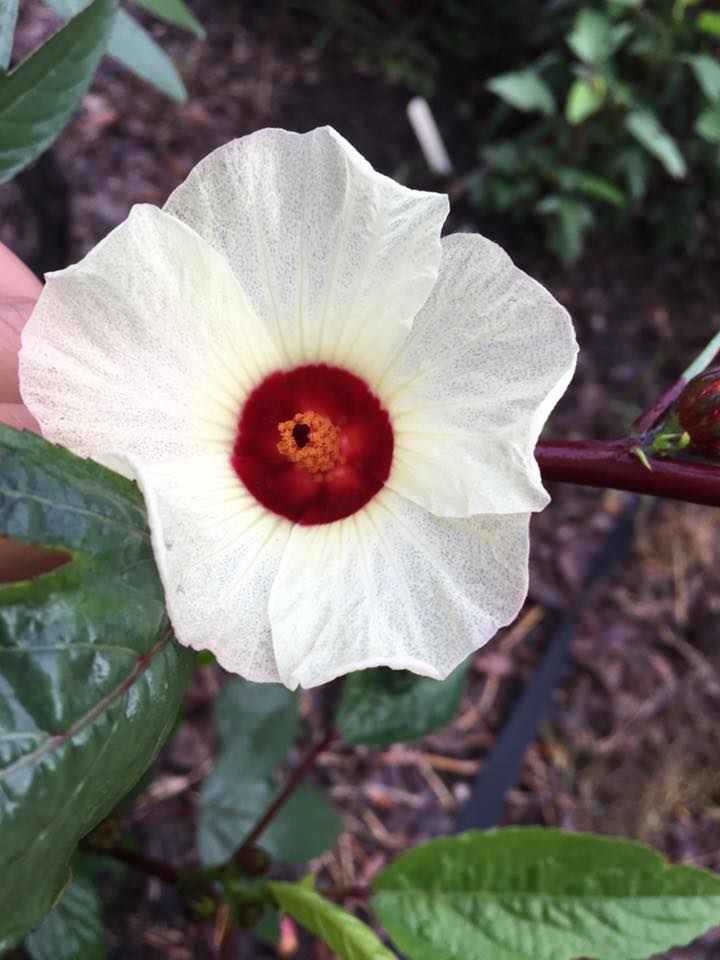
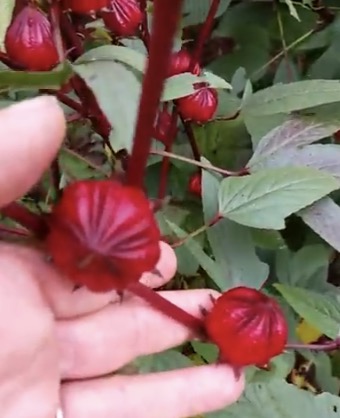
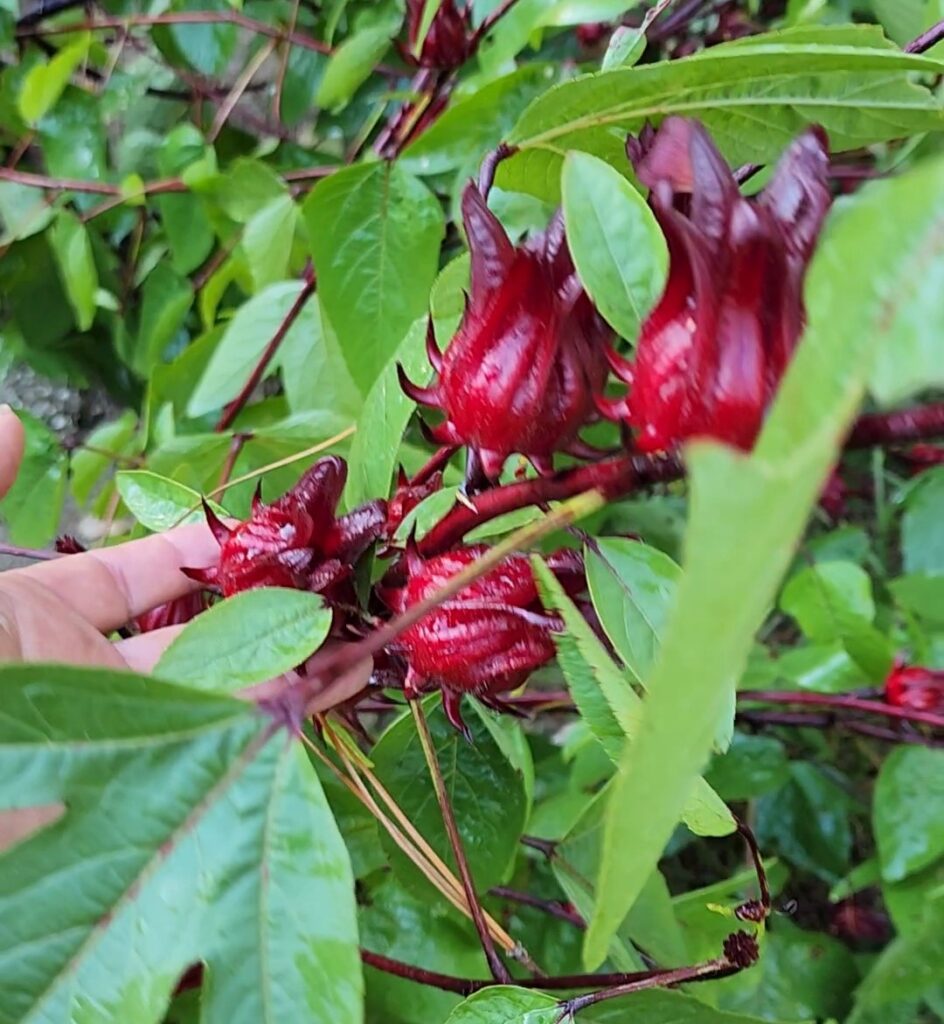
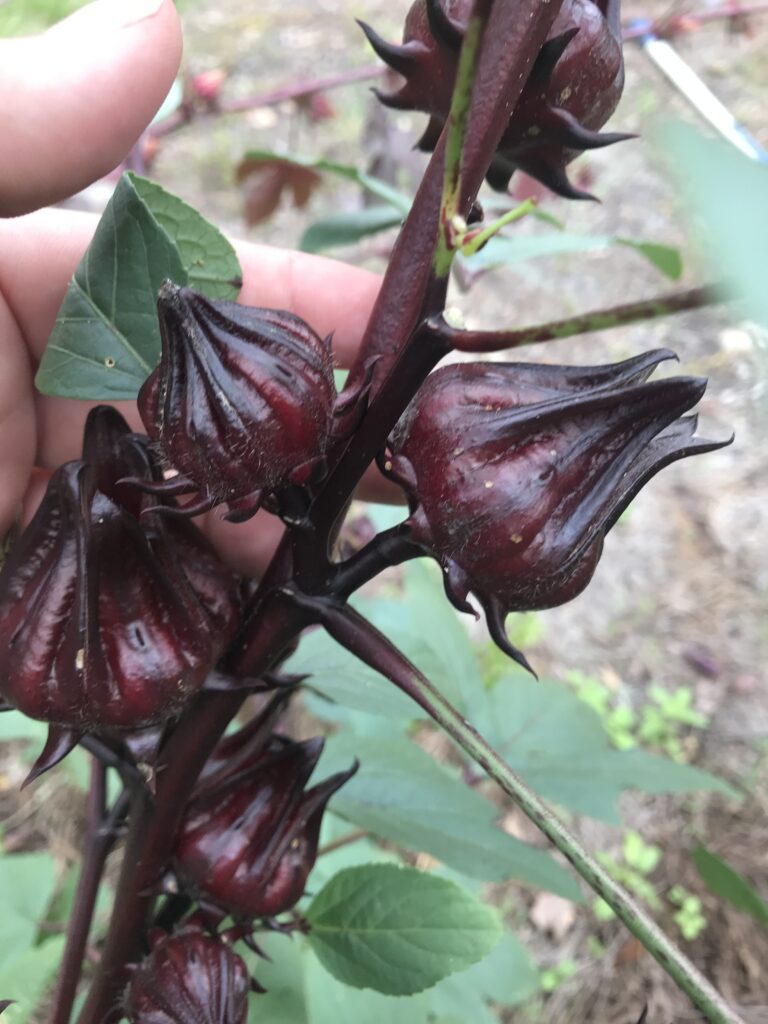
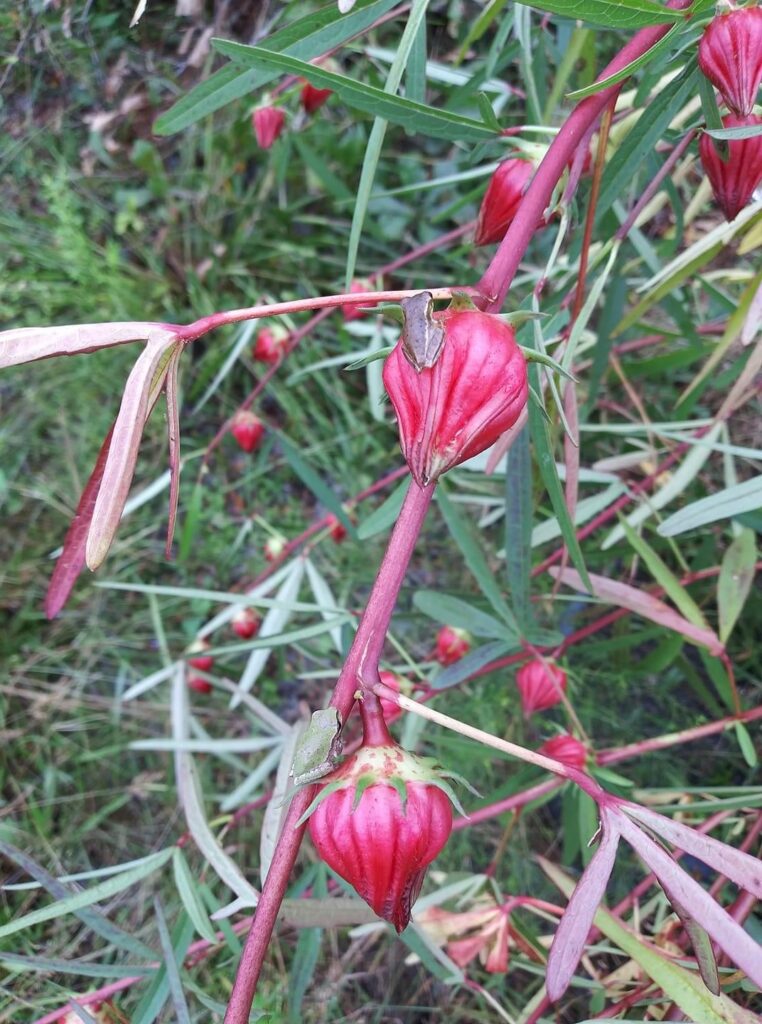
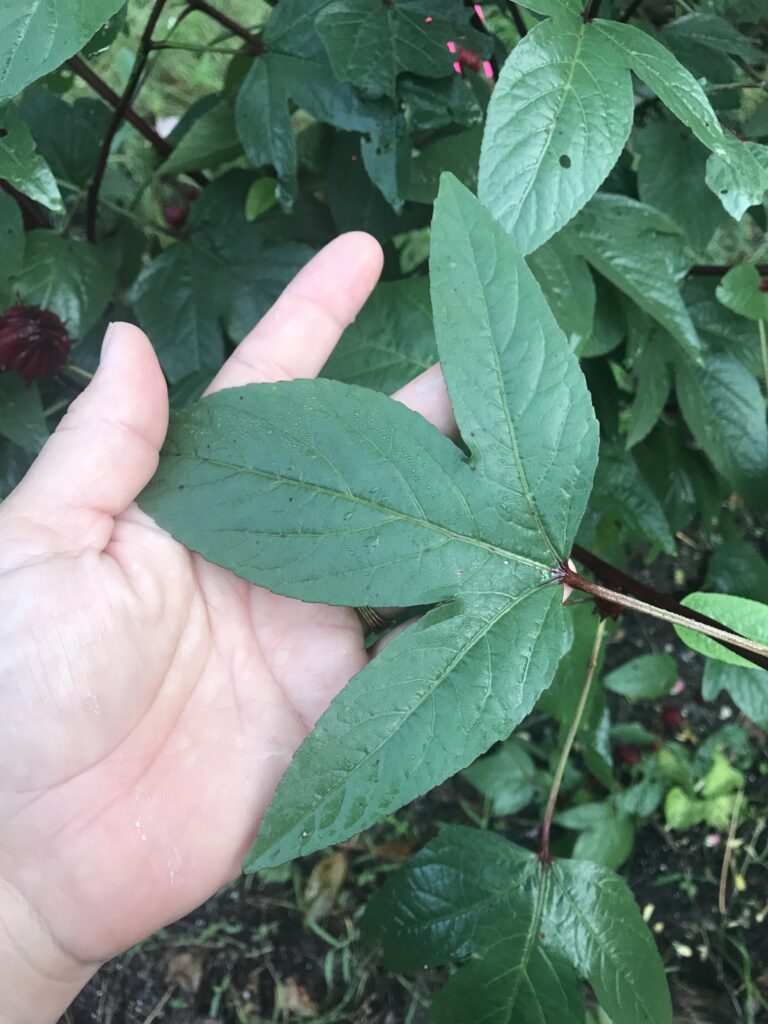
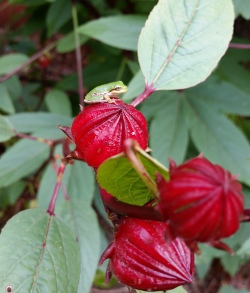
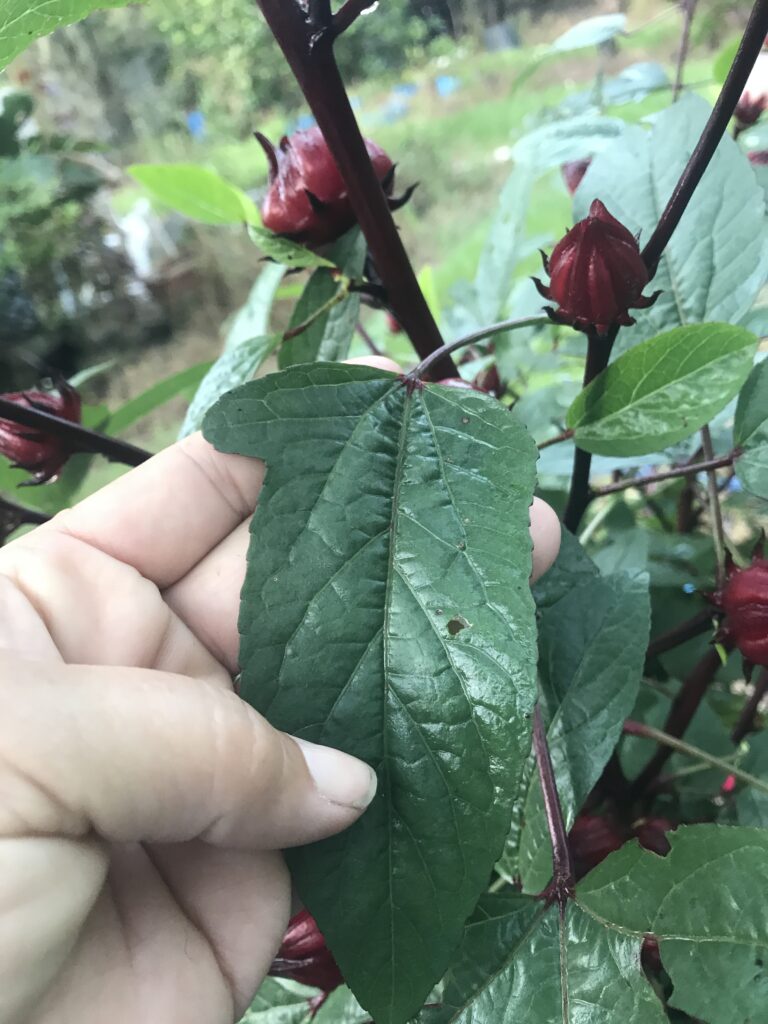
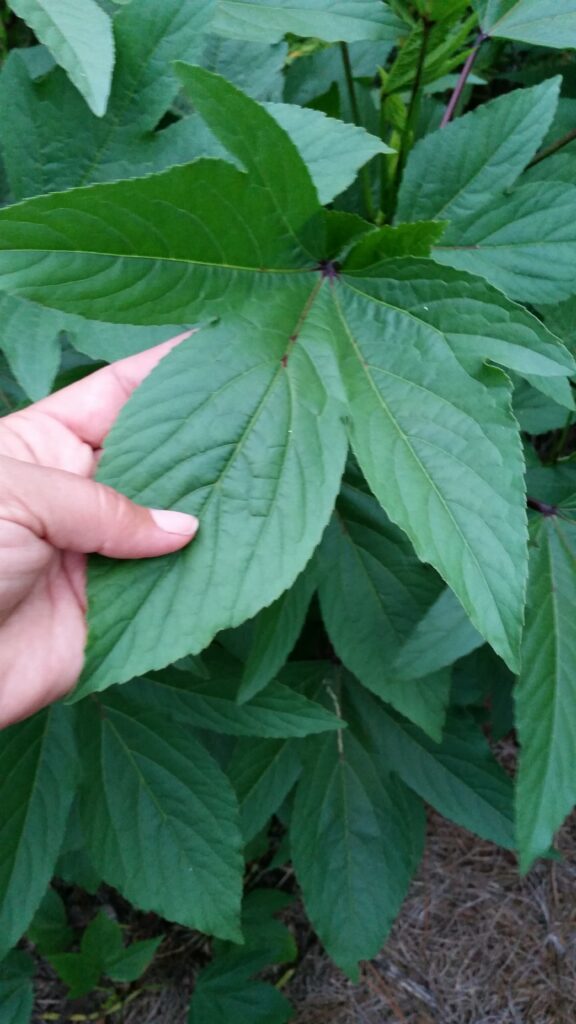

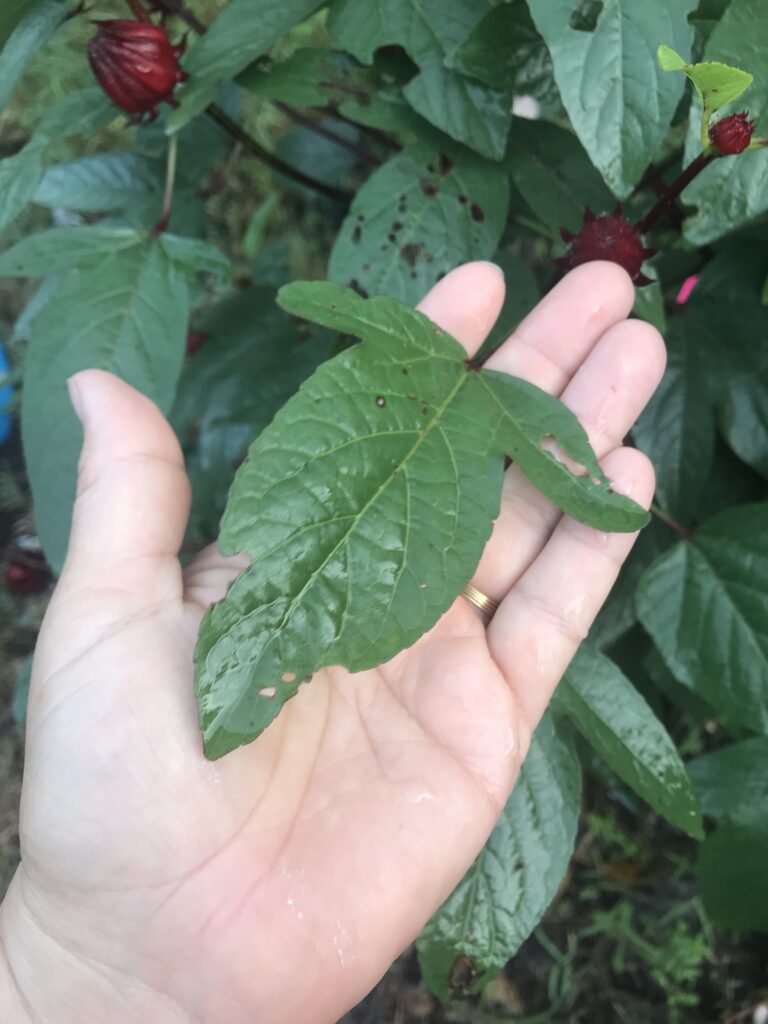
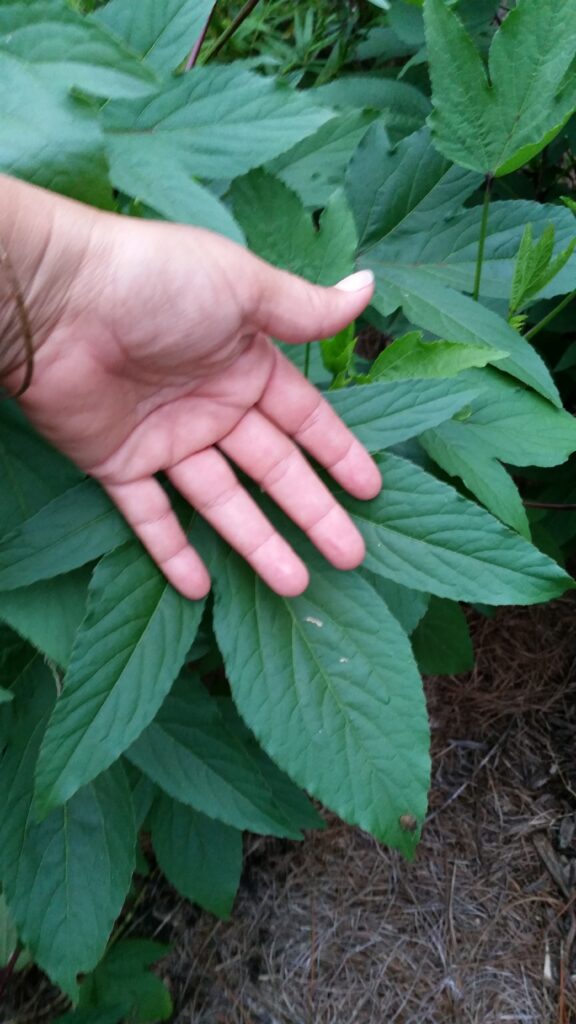
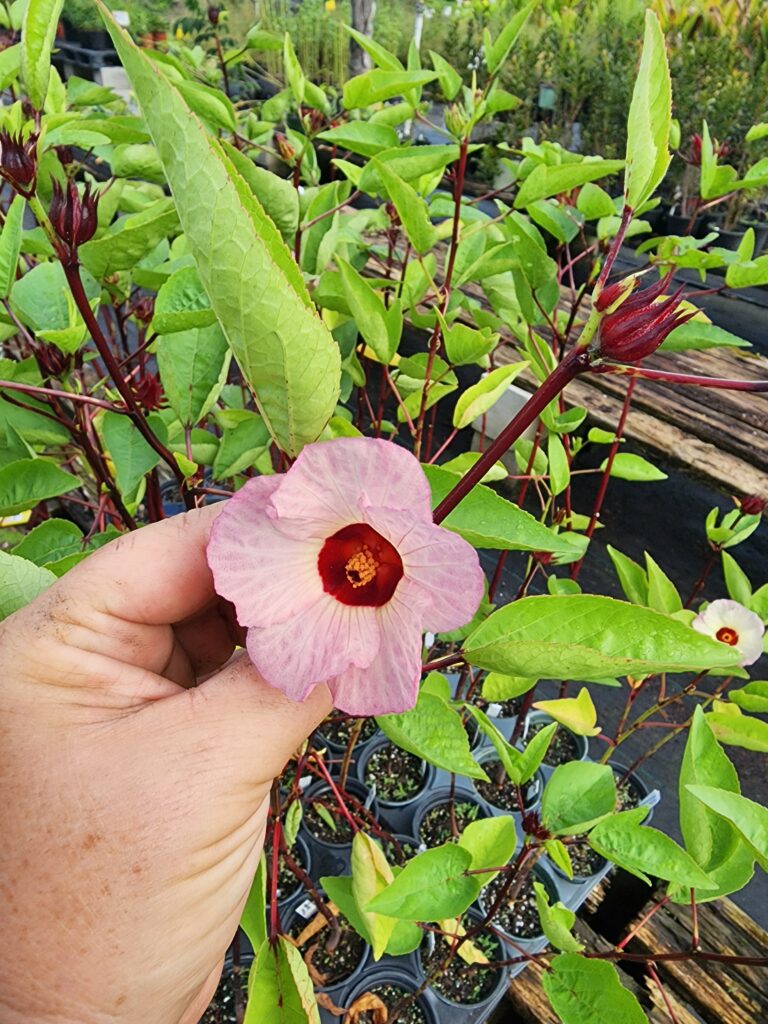
Planting Season for Roselle / Florida Cranberry in Jacksonville & St. Augustine Florida and the surrounding areas:
Plant the seeds as soon as the soil warms in spring. Mid February is when I start my seeds and cuttings can be taken in summer. Plants from containers can be planted in spring or summer and will establish quickly into the landscape.
Sun Exposure for Growing Roselle / Florida Cranberry / Hibiscus sabdariffa :
Plants can be placed in full sun, morning sun with afternoon shade, and morning shade with afternoon sun areas of the landscape in our Northeast Florida garden. I did find, however, that my plants located in a full sun exposure were the first to set flower and a bit larger, the others followed within a week or two and there was no noticeable decline in fruit production, even though logically there has to be because the plants were about a foot shorter in shadier areas of the garden.
Soil Preferences for Roselle / Florida Cranberry / Hibiscus sabdariffa in the Jacksonville and St. Augustine Florida areas:
Tolerant of a wide range of soil components and conditions evidenced by the many countries across the globe where these beautiful plants are grown. Hibiscus sabdariffa is easy to grow and the reward is huge. I highly recommend this plant to any new gardener!
Care of Roselle / Florida Cranberry / Hibiscus sabdariffa :
Watering Your Florida Cranberry:
Newly planted seeds or containered plants will require daily watering for a week or two to get the plant established and growing in the garden. Once the plants are established and growing, they will require very little in the way of care from you. Remember to water at least once to twice a week in times of drought or if our local rainfall levels are low.
Mulching Your Plants:
For maximum growth potential, mulch plants generously – this will help conserve moisture during our hot summer months and keep your plants growing quickly.
Fertilizing Your Florida Cranberry:
I leave mine to grow with just the compost amendment at planting time. These fast growing plants will benefit from additional nutrients being added to the soil and like other heavily flowering or fruiting plants, can quickly use up available nutrition in sandy soil gardens. I amended the soil with chicken manure near one of my plants sort of accidentally when planting a new Citrus tree nearby. Within just a few weeks I noticed the neighboring Roselle was darker green than all the others in my garden! Oops! Maybe their extremely easy growth habit tends to get them a bit of neglect in my garden!
If you find for some reason your plants are in need of a little additional help, try an organic approach. Fertilize with a mixture of fish emulsions and seaweed (kelp) at one ounce each per gallon of water. Apply semi weekly as a foliar spray. You could also try giving them a good watering with homemade compost tea as soon as the top few inches of soil around your plant is dry to the touch!
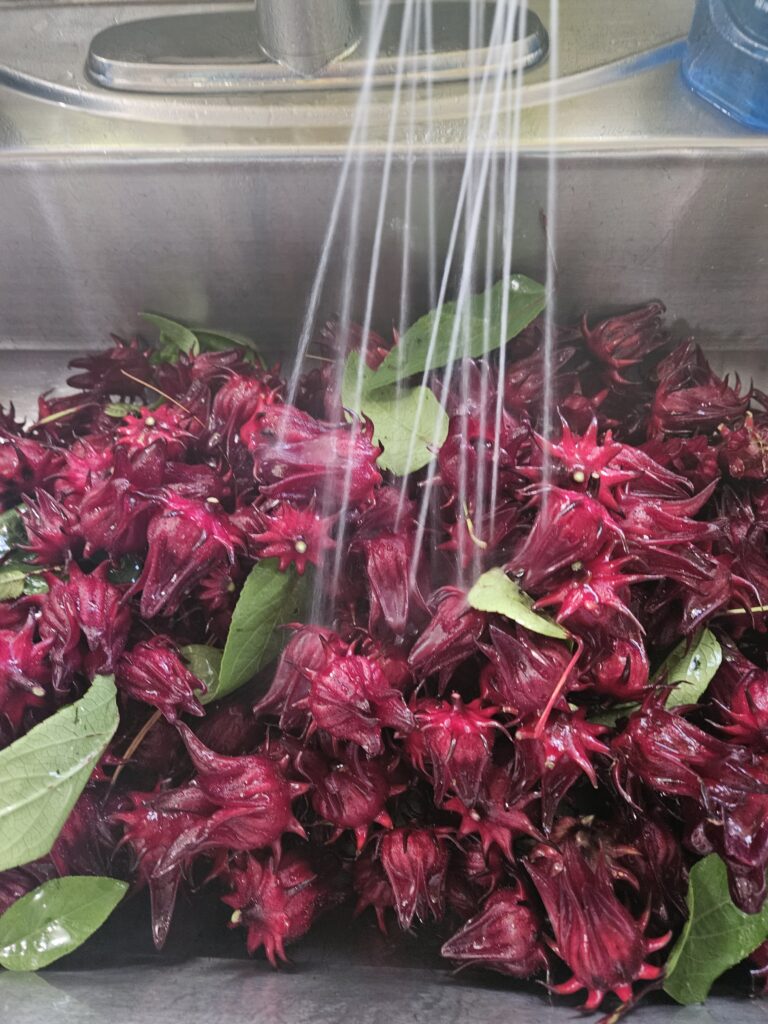
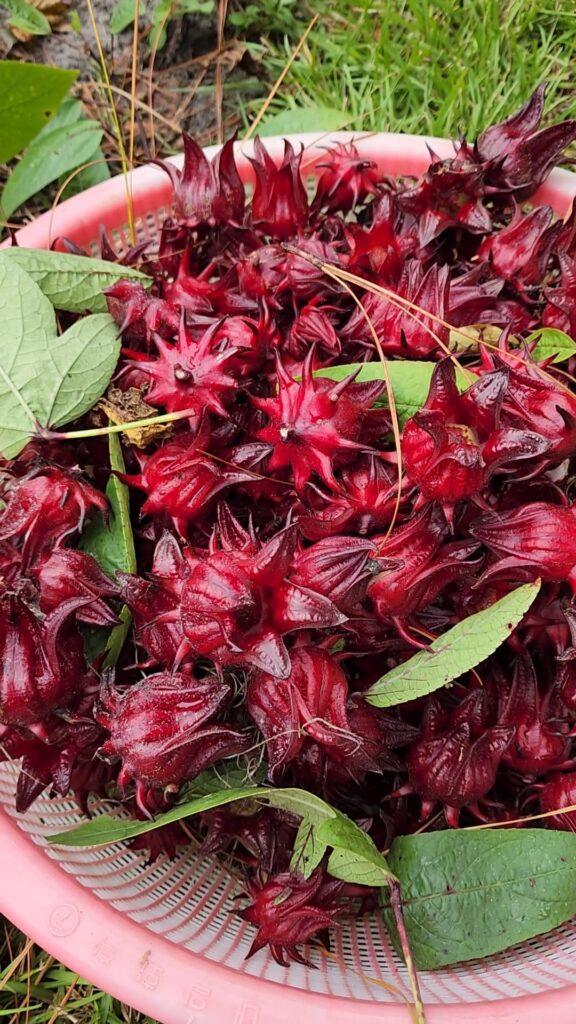
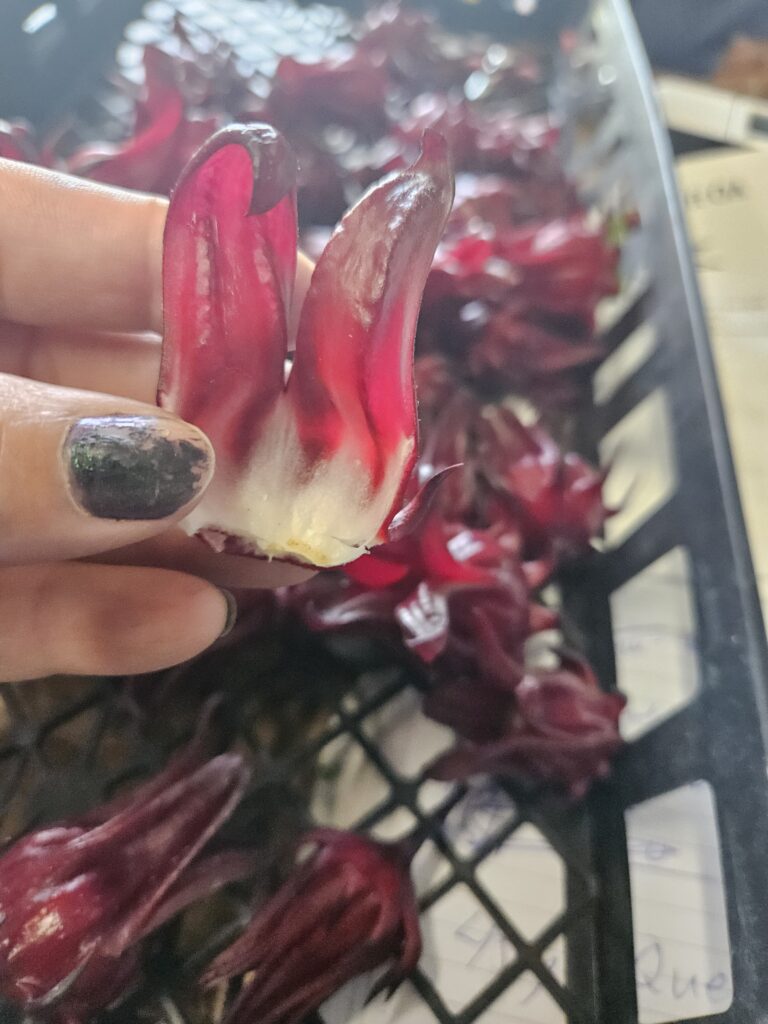
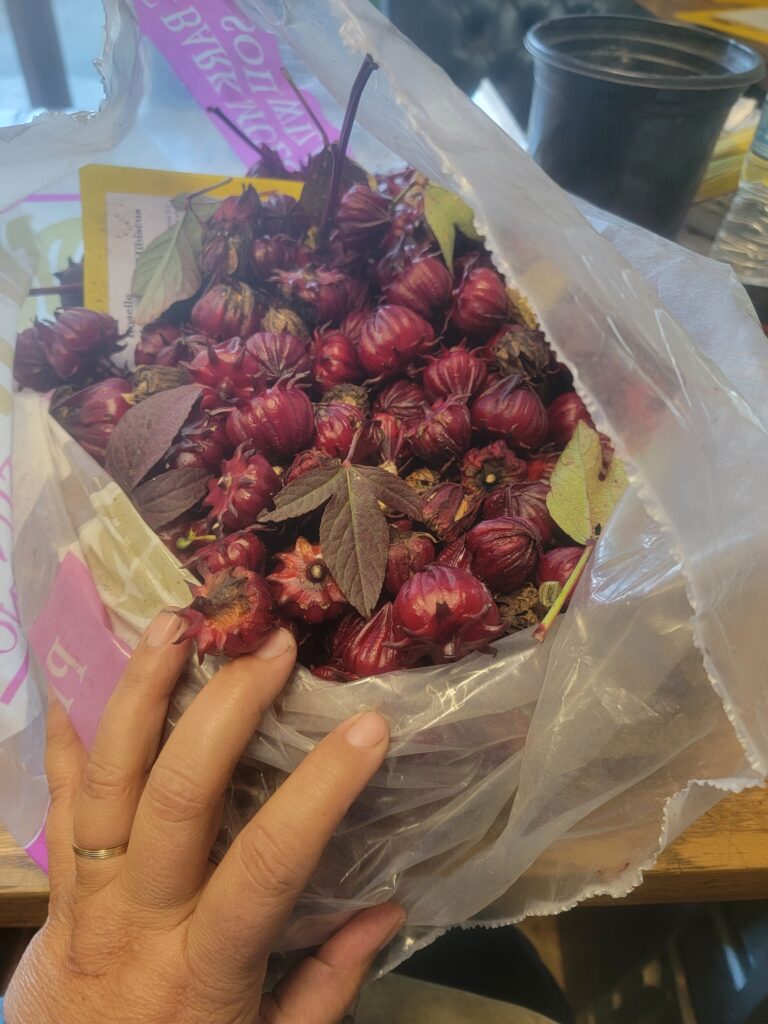
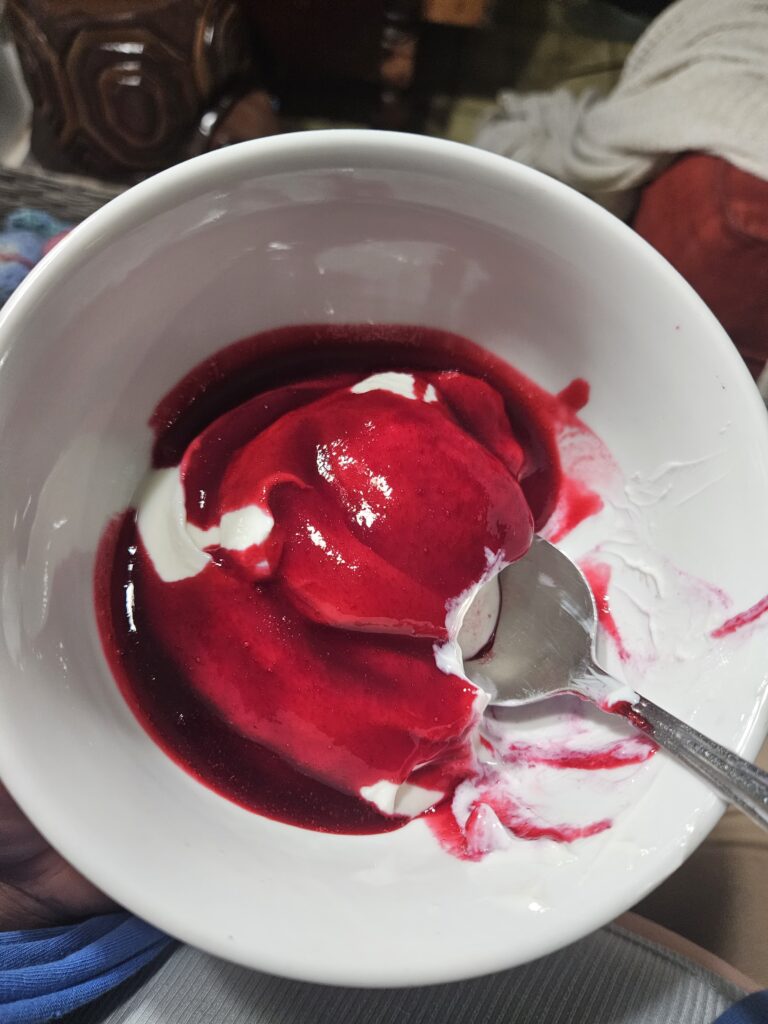
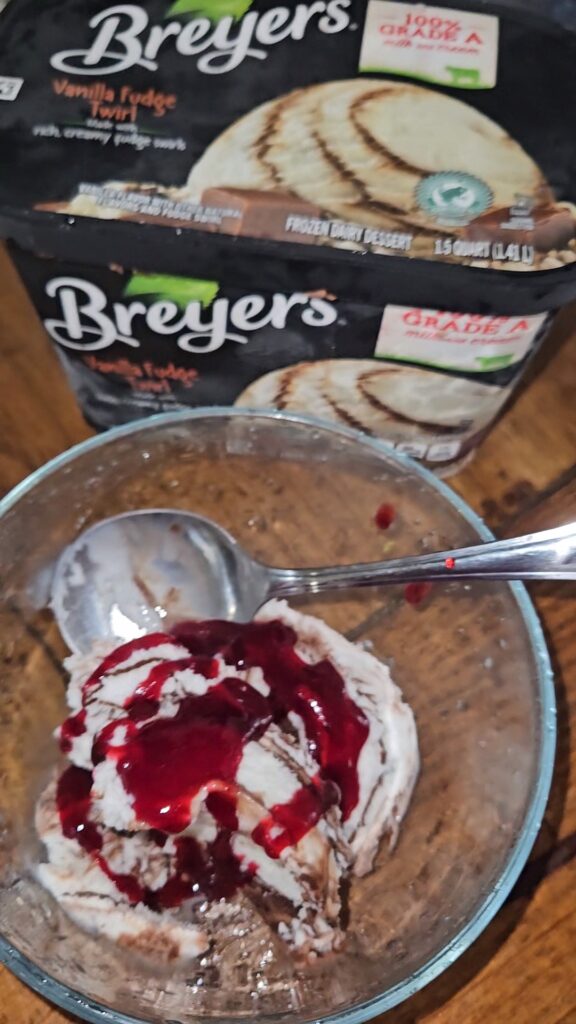
Harvesting Your Roselle / Florida Cranberry / Hibiscus sabdariffa in the Northeast Florida Vegetable Garden:
Your Florida cranberry leaves can begin being harvested as soon as they appear. Flowering generally occurs anywhere from 4-6 months after planting and calyx production here in Northeast Florida will occur in the fall. In my St. Johns area garden the bright red round calyx variety will appear a few weeks to a month before the darker red burgundy ‘spiky’ calyx type often referred to as the Tai Red Roselle. I can not tell a flavor difference between the two but there is a big color difference in the fresh and dried calyx of both selections I grow. The white ones in video below had a more clear lemony flavor and a bit less of a berry hint to it. All three calyx types and their mature harvesting size can be seen in the video below.

